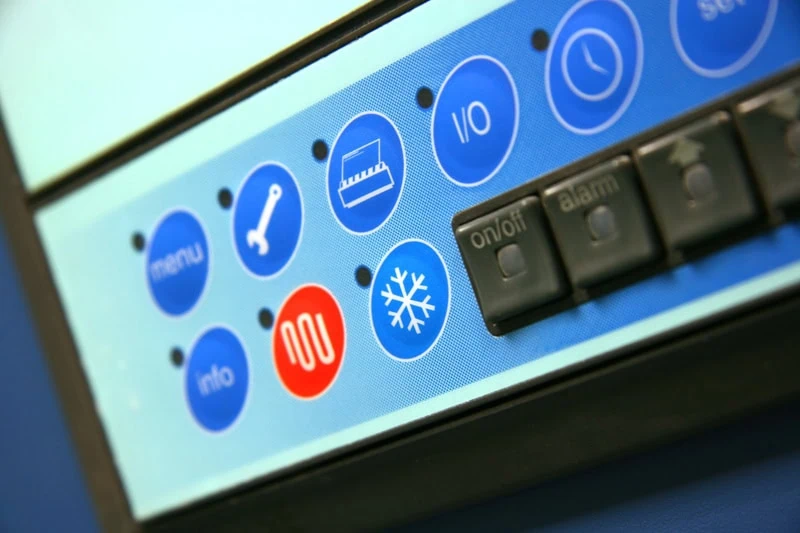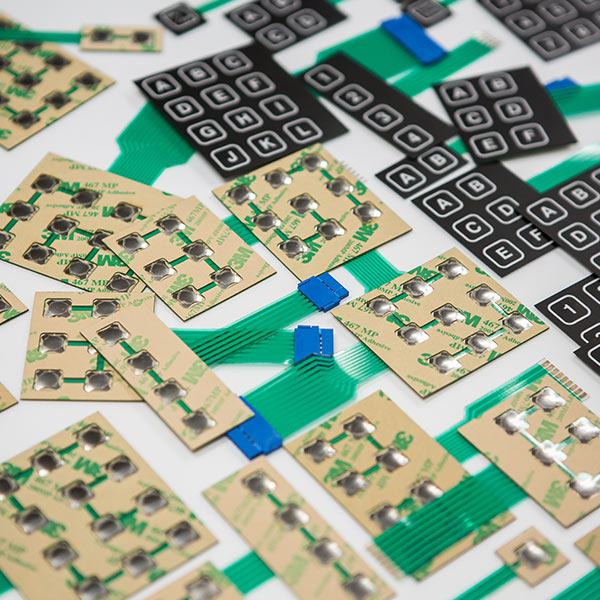Membrane Layer Switches Explained: A Comprehensive Guide to Their Benefits
Membrane switches over represent a sophisticated and versatile option for creating customer interfaces across a selection of markets. As markets progressively seek trustworthy and effective control interfaces, recognizing the specific benefits and applications of membrane switches over ends up being important.
What Are Membrane Layer Switches?

When stress is used to the membrane switch, the layers make get in touch with, finishing an electrical circuit. This straightforward mechanism enables a wide variety of applications, from consumer electronics to commercial equipment. Membrane layer buttons are typically made to be immune and water-proof to dust and impurities, making them suitable for environments where longevity is important.
Furthermore, the adaptability of the materials utilized in membrane layer switches assists in cutting-edge designs that can adapt to numerous shapes and dimensions. This versatility adds to their popularity in varied areas, consisting of medical devices, automobile controls, and home appliances. In general, membrane changes represent a critical component in contemporary interface innovation, bridging the space between users and electronic systems.
Trick Advantages of Membrane Switches
Amongst the myriad of customer interface alternatives offered, membrane switches stand apart for their distinct combination of benefits. One of the primary advantages is their portable and light-weight layout, which permits assimilation right into a variety of tools without including considerable bulk. This is specifically helpful in applications where area is limited.
In addition, membrane switches deal longevity and resistance to ecological factors. They are generally constructed with materials that can stand up to wetness, dust, and numerous chemicals, making them appropriate for harsh problems. This resilience contributes to a much longer lifespan contrasted to standard mechanical switches.
An additional considerable benefit is the adaptability in customization. Membrane layer switches can be published with various graphics, shades, and structures, allowing for customized designs that satisfy specific branding or practical requirements. This adaptability reaches the number of layers and circuit choices, giving engineers with numerous arrangements.
Furthermore, the responsive responses offered by some membrane layer switches enhances individual experience, making them extra intuitive to run. The simplicity of cleansing and maintenance better solidifies membrane switches as a sensible choice in both consumer and industrial applications. Generally, these vital advantages make them a preferred option for lots of developers and manufacturers
Applications in Various Industries
Exactly how do membrane layer buttons discover their area throughout varied sectors? Their flexibility and performance make them indispensable parts in fields varying from healthcare to consumer electronics. In medical gadgets, membrane layer buttons are made use of for their convenience of cleaning and resistance to contamination, guaranteeing health in environments where sterility is important.
In the consumer electronic devices industry, these buttons provide smooth, straightforward interfaces that improve item appearances while maintaining sturdiness versus damage. Automotive applications take advantage of membrane switches also, where they are made use of in dashboards and control panels, using trusted efficiency in difficult problems.
Furthermore, industrial equipment utilizes membrane buttons for control board because of their robustness, capability to endure harsh settings, and adjustable designs that deal with particular operational requirements. The food industry leverages membrane layer switches for their ease of usage and resistance to spills, guaranteeing functional effectiveness in fast-paced setups.
Ultimately, the adaptability of membrane over here layer switches over throughout these varied applications emphasizes their essential duty in modern-day technology, improving individual interaction while fulfilling industry-specific requirements. Their proceeded development promises further combination into arising fields and innovative items.
Layout and Modification Choices
The design and modification choices available for membrane switches are critical for tailoring user interfaces to satisfy details individual needs and visual preferences. These buttons can be developed in different forms, sizes, and formats, permitting smooth assimilation into varied applications. The adaptability in design indicates that manufacturers can produce special interfaces that improve use and preserve brand name identification.
Customized shades, textures, and graphics can be put on the surface of the membrane button, providing a possibility for branding and user interaction. In addition, backlighting alternatives, such as LED lighting, can be integrated to improve presence in low-light problems, hence improving functionality.
Useful elements can additionally be personalized, including tactile responses and actuation pressure, which can be gotten used to fit different user communications. The option of products, such as polyester or polycarbonate, enables for variations in toughness and ecological resistance, satisfying the particular needs of different markets.
Eventually, the considerable style and customization capacities of membrane layer buttons allow business to create user-friendly and visually enticing user interfaces, making sure that their items satisfy both visual and practical requirements effectively. Membrane Switches.
Factors To Consider for Implementation
Executing membrane switches calls for careful consideration of different factors to ensure optimum functionality and user experience. Among the main factors to consider is the designated application setting. Aspects such as exposure to moisture, severe temperature levels, and chemical compounds can dramatically impact the switch's efficiency and longevity. Picking materials that withstand these problems is important.

One more crucial facet is the switch's layout and format. Making sure that the responsive comments and actuation pressure straighten with user expectations boosts usability. Conducting user testing can provide beneficial insights into the optimum style.
Additionally, compatibility with digital elements should be analyzed. The additional info switch's wiring must straighten with the overall system architecture, guaranteeing reliable signal transmission and minimizing disturbance.
Moreover, production techniques and costs ought to be evaluated. The option between customized styles and typical designs can affect both budget plan and lead time.
Lastly, consider maintenance and repair. Membrane layer buttons may need specific cleansing and treatment treatments to keep their appearance and capability in time. By attending to these factors to consider, organizations can implement membrane switches that satisfy their operational requirements while providing a positive individual experience.

Verdict
In verdict, membrane switches over stand for a durable and functional control user interface hop over to these guys ideal for a vast array of applications throughout several industries. Membrane Switches. As technology proceeds to advance, the significance of membrane layer switches in contemporary gadgets stays substantial, supplying both capability and aesthetic charm.
Membrane layer changes represent a functional and sophisticated remedy for creating customer interfaces throughout a selection of markets.Understanding the essential elements of contemporary electronic interfaces, membrane layer buttons are a type of user interface device that are composed of flexible, thin layers of material. On the whole, membrane layer switches over represent a critical component in modern user interface innovation, bridging the void between customers and digital systems.
Among the myriad of customer interface options readily available, membrane layer changes stand out for their distinct combination of benefits.The design and customization options offered for membrane layer switches are important for tailoring user interfaces to meet details user demands and aesthetic preferences.